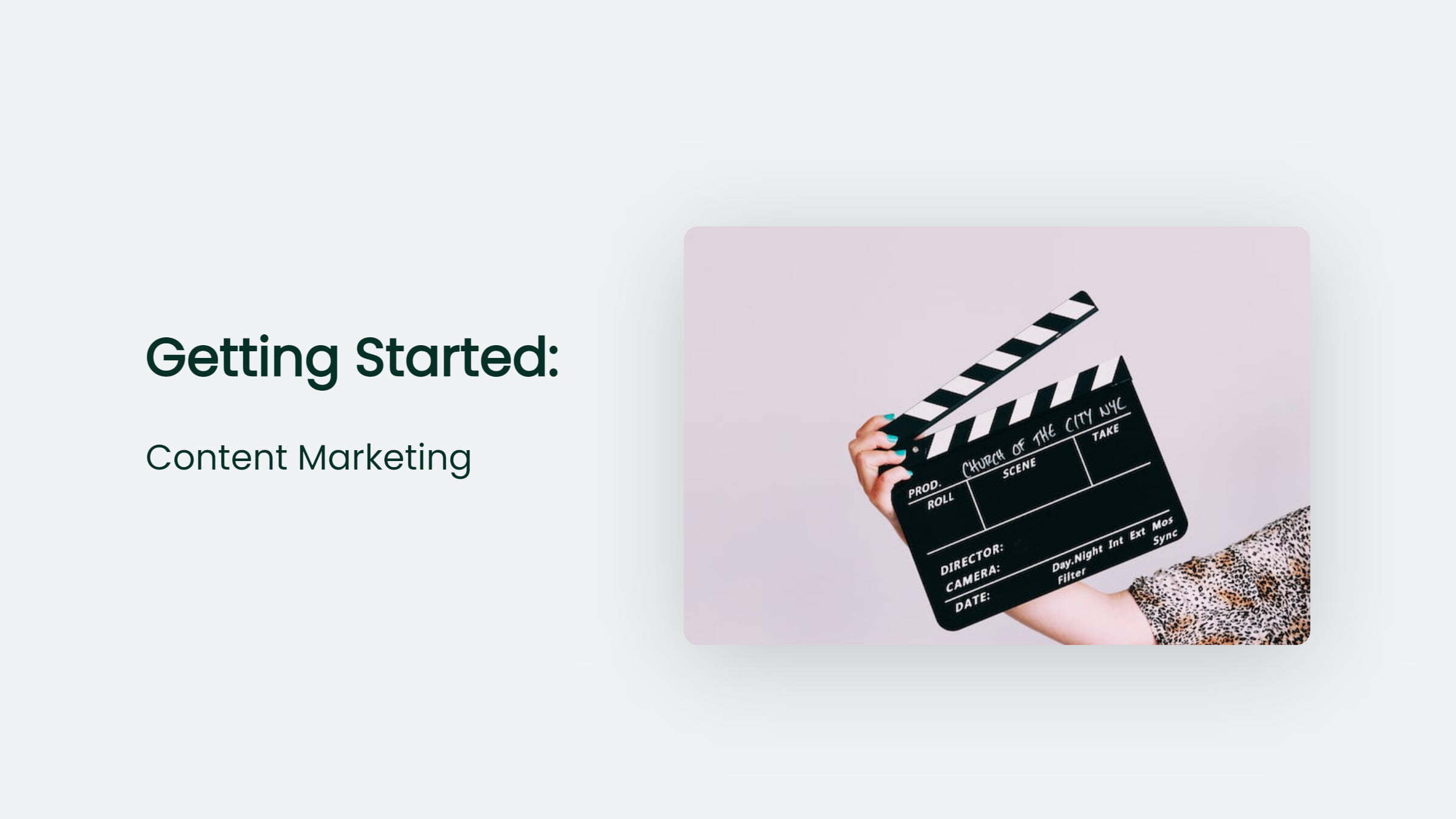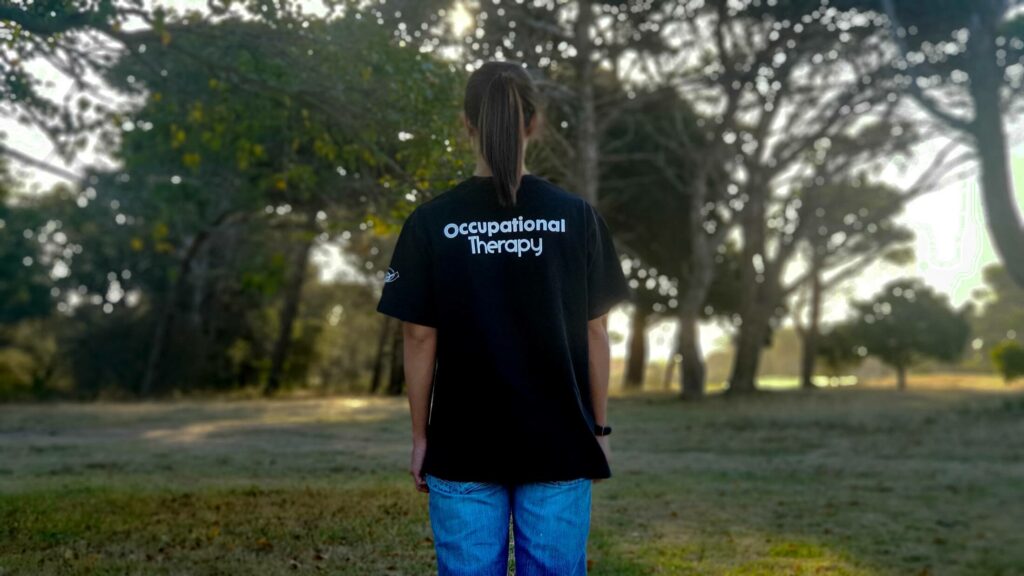It’s no secret that content marketing has been one of the most effective ways for brands to create awareness and drive traffic to their websites.
In fact, according to a study by Hubspot, 70% of marketers are actively engaging in content marketing.
And with good reason-the average consumer spends about 90 minutes on social media every day (that’s about a 1/4 a standard 40hour working week!) and sees hundreds, maybe thousands of advertisements in a week.
It means businesses must get creative when it comes to getting their message out there through quality content marketing strategies!
It is my Ultimate Guide To Successful Content Marketing for Small Businesses: A Game Plan For Brands And Influencers.
So we’re all on the same page, let’s cover the basics of content marketing.

What is content marketing?
Content marketing is a strategy that businesses (and people) use to grow their customer base by creating, publishing and distributing content to attract people to their brand.
The goals for this type of strategy (which are crucial to have in all types of marketing) can be anything from simply educating potential buyers about your products or services all the way up to driving sales directly on your site with lead magnets.
How has content marketing evolved?
Content marketing has evolved considerably over the years and it’s now a more sophisticated approach to building relationships with customers by providing them valuable information – sometimes in exchange for their contact details, or just simply getting people talking about your brand on social media platforms like Twitter & Facebook.
As new platforms become available (think TikTok, Clubhouse, Instagram Reels), content marketers need to adapt their strategies and content plans to suit where their audience ‘lives’.
Content Marketing for Small Businesses: When to Start?
You should get started with content marketing as soon as possible (why not today!). The sooner a company starts, the more time and equity it’ll build.
By starting now, you will start establishing yourself as a leader in your industry and you’ll be able to reap the benefits of being an ‘early adopter’.
Content marketing is one way for brands, like yours or mine to show their brand personality by telling stories about what they do best and why it matters.
If you have time, you can start creating content yourself, have a staff member do it or hire a content marketer.
Search Engine Optimization Impacts of Content Marketing
Content Marketing is one of the most cost-effective ways to achieve top rankings on search engines and get results from it.
You can have all the link building in the world, but if you don’t have content to link to, it’s well… worthless.
One goal of content marketing should be driving relevant traffic to a website, not just getting links or shares (although those are still very important).
Bonus tip: Once people have been on your site, you can remarket to them based on the content they’ve viewed.
But how do I get ranked on Google and how do I get all this traffic?
The best way to rank on Google is by creating content that’s relevant, informative and valuable. If someone shares it with their friends over social media networks such as Facebook then that sends a signal to Google that the content is good.
A Content Marketing Example
The best, easiest, quickest example I can give you – that I know you’ve engaged with… Is this article. You’re reading and engaging with ‘content marketing’ right now. This article is an example of content marketing and chances are, you came from Google or Socials to read it (Thanks!).
How long does it take for content marketing to show ROI?
For those not sure, ROI is short for Return On Investment.
It can take anywhere from a few hours to years for content marketing strategies, to generate leads/sales.
Track the ‘soft stats’ early on, like traffic, shares and engagement and work on how you can better convert this traffic into leads.
What are the common roadblocks to content marketing success?

Some of the common roadblocks to content marketing success can be:
Lacklustre messaging and a lack of creativity:
If you’re not saying anything new or innovative, why should people care?
Poor headlines:
It’s important that your blog posts have an interesting headline so readers will be drawn into what they’ll find inside.
Not addressing online queries:
It helps if you have content that addresses what people are asking online. Whether that’s on sites like Quora, or maybe on your own site.
I’m sure as a small business, you get questions from customers. So why not answer these on your blog?
Not understanding your audience:
It’s important to know who you’re writing for. This will help with the content that is created, and also how it should be distributed in order to reach this specific group of people most effectively (email marketing vs social media vs YouTube vs Podcasts).
Lack of resources:
One of the biggest roadblocks to content marketing success is not investing time and money into your content marketing. People can’t find your content if you’re not publishing it.
The content marketing game has changed and it’s not enough to just publish a blog post every once in a while anymore, you need an ongoing strategy that includes social media posts with links back to your site or product pages on the website as well!
How to get started with content marketing

There are a few things you should know before starting.
First, it’s important to think about your audience and what they want from content marketing.
No, really… think about your audience and what they want. You’ll also want to think about what YOU want. The content you produce isn’t just for them.
It also needs to provide something for you. And that thing is called R.O.I.
(What’s ROI Casey? ROI = Return on Investment. It’s the amount of money you make from your content marketing, minus what it costs to produce. ROI is a good way for brands and influencers alike to measure success.)
Second, you need a marketing plan. Or in this case, a content marketing plan.
Content plans will enable you to create a solid strategy for your content marketing and give you an idea of what to include in the posts.
(What should I put on my plan? You’ll want sections like Goals, Target Audience and Research & Analysis)
Having a content plan also enables you to reflect on your progress, which is important for brands and influencers alike.
(What should I do if my content marketing isn’t working? You’ll want to analyze the problem areas in order of importance: Message relevance; Content quality & quantity)
Third, have a distribution plan.
How and when are you going to update your website and socials with all of this glorious wonderful brilliant content?
Once the traffic starts flowing, you’ll keep people coming back for more so they don’t miss out when something important happens in their industry or niche of interest (i know I would).
And finally, you need high-quality original written material which can take time (a serious amount of time – don’t be scared) but if done right should result in higher engagement rates from followers because there isn’t anything better than being able to do what others cannot!
I can’t stress how important it is to have original content. If you use thin or copied content, you’re not only risking your reputation, but also the success of any digital marketing campaign.
The best way to create original written material is by writing about topics others cannot (or at least haven’t yet) – this means that if a topic has been covered extensively already in blogs or on social media channels like Facebook and Twitter then it’s time for something new! (I know, I know, I’m a hypocrite… It’s still important to cover some basics as well).
Know your customer
Creating customer avatars (customer personas) is a great way to understand your target audience.
What are customer avatars?
Customer personas (or “avatar”) is a representation of the typical member in an organization’s market segment, based on research and data about that group’s needs or wants as well as their demographics such as how old they might be, their socio-economic status, education level, interests, gender and so on.
What are the benefits of creating customer avatars?
Creating a persona is an excellent way to understand your target audience. It can also help you create more relevant content and better serve this segment, which will increase engagement with them over time as well as lead generation opportunities for sales or conversions.
How to Target your Audience
If you’re in business, you’ll already know something about your customers. I’ll run you through scenarios and how small businesses can be leveraging digital content to reach their audience online.
Plumbers:
Let’s take a Plumber. John runs a successful plumbing company in Australia but wants to expand his business without spending a fortune on advertising.
John has 10 years of experience and a knowledge bank of tips tricks and hacks for the most common plumbing issues. I often say to clients, “film your day”. What tasks could you film that people would be interested in?
John could easily:
- Create ‘How To’ video content. (How to install the most popular dishwasher models in the USA)
- Create plumbing hack videos (how to quickly unclog any drain)
- Create comparison videos reviewing products (mixer taps vs standard taps)
Because John has all of this knowledge already, the possibilities are endless – he just needs to get his knowledge onto the internet.
4wd Shops / Mechanics:
Okay, I love four-wheel drives, so I just had to write about this!
There are a million (and one) accessories for the 4×4 enthusiast. Most require some basic or moderate skills to fit. Mechanics could easily create content installing 4wd modifications like a lightbar or a winch.
I’m a huge proponent of integrating content marketing into the day-to-day. It only takes a few minutes to set up a camera to film what you’re doing while you work.
Paediatric Speech Pathologists:
Being a parent of a child with an undiagnosed or diagnosed communicative disorder can be stressful and upsetting. Parents will of course go to the internet to find information.
Speech Pathologists have first-hand experience working with children with these issues and could easily pass the information on through blogs, videos and podcasts.
Parents will often search “Speech therapy for kids”. But that’s a pretty competitive keyword. What if you had the chance to rank for long-tail keywords, with a tonne of traffic – that aren’t nearly as competitive?
It is where content marketing can provide quick ROI.
Retailers:
Consumers often compare products against each other online. (There are YouTube channels dedicated to comparing one product with another!)
Retailers could:
- Compare their products with competitors in videos or reviews.
- Create product reviews
- Create price comparison pages
There are literally endless ideas that you can implement in your content marketing strategy. Just remember, do your research first so you’re not wasting time writing about things people just aren’t interested in.
Content planning – how do I find content to write about?
One of the most common questions I get is “How do you come up with content to write about?” The answer, as it turns out for me at least has been quite simple. All my blog posts are based on things that I do or have happened in business or marketing.
To be fair, I also write content based on data. I check what people are asking online, the questions that haven’t been answered and then I answer them – in posts like this.
I use a tool called MarketMuse to find out what questions are popular. I’ll share more about that in another post, but for now: if you want people to read your blog posts then make sure they are the best posts on a topic! If there’s already something better written than yours – keep working on it.
How to become an authority in your niche using content marketing?
Being seen as the authority in your niche is a huge advantage for any company or brand. Create content that will engage your audience and answer their questions. Find what people want and give it to them!!
Content marketing is an excellent way of building authority. It builds trust in your brand. Content Marketing helps build trust between consumers/customers who are looking at doing business with you.
It doesn’t matter whether you’re a retailer, mechanic or consultant – great content will ‘warm up’ your audience and make them more likely to buy.
Trust is a huge thing. Social proof is a huge thing. If you’re not leveraging this in your marketing – you’re missing out.
How do I distribute my blog articles to get more traffic?
Once you’ve written your amazing blog content, you need to distribute it. There are a few ways that will help your content get more traffic:
- You can share the article on social media like Facebook and Twitter. (Social media marketing is one of the best marketing ideas for small businesses)
- Email to your subscribers.
- Create a YouTube video on the topic, using your article as the script.
- Create a Podcast episode on the topic.
- Post to LinkedIn or Medium
- Sign up to various content curation platforms, where you can submit your content to be shared.
You can also submit your article to other blogs in your niche. This way, you can say “as seen on” and get your content in front of more people.
How to measure and improve your content marketing strategy?
Measuring the performance of your content marketing strategy is the key. You can use a variety of metrics to measure success or failure depending on what’s important to you and your business.
First, figure out what your goal is. Is it engagement, followers, shares, or rankings on SERPs (Search engine results pages)? Or, is it something like purchases, leads generated, sign-ups, e-book downloads etc.
Once you know what’s important to you and your business, start tracking it.
Tools like Google Analytics, SEMRush, Ahrefs and YouTube Studio Analytics are super valuable in tracking your content marketing results.
You can combine tools to have a greater picture of what’s happening, where users are coming from, what they’re doing and how much time is spent on your site.
The data you collect will help to inform decisions about the content that’s being created as well – like whether or not it should be promoted through paid channels such as Facebook ads for example.
Tools such as Buzzsumo or Ahrefs also help with this because it gives us a good idea about which topics resonate well online based on social shares/links etc., meaning there’s less guesswork involved when creating new pieces!
It’ll save time too since you can use these tools for research. It’s better to do research early on than wait till your article is published and find out no one is looking for the topic you wrote about.
Measure your content marketing strategy by tracking its performance. And then use those metrics as indicators of what you should be doing more or less often with future campaigns.
What about visual content?
I’ve focused a lot on written content, but there are others we haven’t spoken about yet and one of them is Visual Content.
Visual content, like infographics, YouTube videos, and photos, is often an intimate way to engage your audience.
Here are some ideas for visual marketing:
Infographics
Infographics can be a great way to share your expertise and knowledge about certain topics in an easy, digestible format that is also visually appealing (think charts or graphs). You’d be surprised how engaging these are and how many shares they often get on social media.
Video
YouTube is an incredible platform. I was lucky to start a career on YouTube back in the early days of the platform.
Video content is engaging and is a great way to share your expertise with the world. Take a look at what others are doing in your niche and see what content is working for them.
Content Marketing on YouTube

People often neglect video – but they’re missing out. Video is one of the most amazing content marketing mediums we have available today. It’s an incredible way to get your message across and allow people to get to know you and your small business.
You don’t need to have an expensive camera to get started on YouTube either. Everyone has a camera in their pockets these days (their phone). A basic smartphone’s camera is more than good enough to start making videos.
There is a tonne of free video editing software programs and apps available that will help you create valuable content. One that I personally love is BigVu, a teleprompter app.
Actually, when I was much (much) younger, I was a bit of an ‘influencer’. (Before influencers were even called influencers.) I amassed 3.7million views in a very niche, niche and had sponsorship deals from some of the biggest brands in my particular niche.
This opened up all kinds of opportunities for my professional music career and landed songs on TV shows like Dexter, record deals, press and industry-leading magazine articles and so much more. I can attest first hand the benefit of publishing your content on YouTube.
It doesn’t matter how old you are, people love watching videos! And you can create content that’s super simple (photos with a voice-over) or complex video productions. Just remember, provide value and videos that your target audience will love.
How do I convert people who’ve engaged with my content?

So you’ve created your amazing content. You’ve posted it, shared it, obsessed over it – now you’re getting traffic flowing in!
Congrats! But how do you convert those people who’ve engaged with your content into subscribers and customers? What’s the best way to turn them from a viewer of your blog post or video into raving fan that loves your products & services?
Here are some ideas:
- Call to Action: Make sure your content contains a call to action. What do you want people to do?
- Create a sense of urgency: If you want people who’ve engaged with your content, but not yet subscribed or purchased anything from it – make them feel like they need what’s being offered now. Make sure the call-to-action is clear and concise so that viewers know exactly how much time there is left before an offer expires.
- Contextual Links: Adding links inside your written content is a subtle way of directing your readers to other content on the site. It’s a great way of keeping people engaged with what you’re writing about and also helps them find more information that they might be interested in reading or watching
- Email Subscribe Popup: Use an email subscribe pop-up on the page to capture the email addresses of people who are interested in your content. This is a great way to build up an engaged audience for future blog posts and also helps you grow the number of subscribers
- Remarketing: If you have a Facebook pixel on your site, you can track users and remarket to them with ads on Facebook. This is a great way to get people who have visited your site in the past, to engage with you again. You could target all users in the last 180 days and share your latest blog post or YouTube video with them. Optimise for engagement, traffic, conversions, messages or whatever is important to you and your brand.
How to increase subscribers
Increasing your subscribers can be as simple as adding a subscribe button to your blog post.
Try these ideas:
- Add a subscribe pop-up or embed it into the content.
- Implement a ‘content lock’, which will only enable part of the content to be viewed if the user provides their name and email address.
- Offer something for free, like an eBook in exchange for their name and email.
- Offer discounts or other incentives.
- Gamify your site. You may have seen those ‘spin to win’ games on sites, where the user has a chance to win one of several prizes.
How to increase leads
Subscribers are leads too, but you may want to qualify your leads before you start following up with them. Start by adding a lead capture form to your blog post.
You may want to ask for more information than just their name and email. You might ask for their budget, the service they’re interested in, or their location.
Set up a funnel on your articles to boost conversions. You’ll want to use a mix of email drip campaigns, social ads and anything else at your disposal to take them from cold, to warm and into a hot lead.
How to increase clients & customers
Your content will help create trust with an audience. If you do this right, they’ll be more likely to buy from you. You just need to tell them what you want them to do. Use a strong call to action on your site and funnel them to product or sales pages.
If you’re not sure how best to convert visitors to your website, it’s worth looking at conversion rate optimization (CRO) techniques that are proven time-tested methods in increasing the number of people who take action after visiting an online store/website.
These include things like AIDA – Attention Interest Desire Action; where we use headlines with strong calls outs so they stand out from other articles being shared by our followers. As well as using persuasive copywriting tactics including social proof testimonials reviews etc., all designed specifically around converting your users.
Content audits and updating content
Let’s say you have a tonne of content already and maybe it’s working, maybe it’s not? What do you do? Update update update!
If you have a blog post that’s been sitting on your site for 12 months without any updates, chances are it could be working harder for your small business.
So, update the content and make sure to include an updated date so Google knows when this was last edited! If there is new information or developments in your niche then also add those into posts too.
You’ll be amazed at how updating your content can drive new traffic and rankings.
This is a great way to keep your content fresh and relevant. It’s also an easy win for SEO (search engine optimisation) because Google will know that you’re still updating the site, which means they’ll rank it higher in search results!
Here are some ideas on updating content:
- Update with latest industry stats
- Add new keywords
- Add the current year to the end of the Meta Title e.g. (The Ultimate Content Marketing Guide for 2021)
- Create video content and embed
- Create a podcast on the article and embed
How can I automate my content marketing strategy?
Automating your content strategy can be a great way to save time. It’s important, that you still have some control over the content so it doesn’t turn into spammy marketing messages or anything negative – which will only make people unsubscribe from your list in droves!
The best thing about automation is how much more efficient things can get.
There are many parts of the process that you can automate including:
-The creation of blog articles, social media posts and emails. – Scheduling the publishing dates for your content so that it’s released at a time when people are more likely to be interested in what you have on offer.
You can automate the research process using tools like SEMRush, MarketMuse, or Google Search (we’ll show you a trick later in the article).
Once again, research is really the key here and you should spend a bulk of time on this.
You can also automate the distribution of your content by using tools such as Buffer, Hootsuite and Sprout Social to help you share it on social media at a time when people are more likely to engage and see your content.
Automating the written or visual part of your content strategy isn’t possible – yet. But, you can hire some great contractors, freelancers and agencies out there to help you with this.
FAQs – Frequently Asked Content Marketing Questions
u003cstrongu003eWhat is a content marketing plan?u003c/strongu003e
A content marketing plan is a strategic document that outlines the goals for your brand and how you will achieve them. You might include information about target audiences, types of content, schedules/timelines, and budgets.
u003cstrongu003eWhat is a content calendar?u003c/strongu003e
A content calendar is a tool that helps you plan out your content over time. It’s important to have one because it will help with consistency and also make sure there are no gaps in between posts or blog articles, which can lead people who visit often feel like they’re not getting enough information from what was once their favourite site.
u003cstrongu003eHow long does a post need to be to rank on Google?u003c/strongu003e
Google’s algorithm is constantly changing (daily believe it or not!) so it can be hard to know exactly how long a blog post needs to be in order for it to rank on Google. However, there are some general guidelines that you should follow:
Do long-form blog posts rank best on search engines?
Google likes posts that are at least 2000 words in length, and the longer your post is the greater chance you will have ranking on search engines. I’ve seen blog articles as long as 10,000+ words!u003cbru003eu003cbru003eIf you’re writing a short article about something specific – say how to make toast – don’t worry too much if it’s not super lengthy because there’s no need for an essay when all people want from this type of content marketing piece would be some basic instructions with pictures illustrating what they should do step by steps).
u003cstrongu003eHow long does it take a new post or page to rank?u003c/strongu003e
The answer to this question is actually pretty simple: it depends on a few factors:u003cbru003eu003cbru003eThe competition level for the topic/keyword you’re writing aboutu003cbru003eu003cbru003eHow long the article has been indexed for (more on this below)u003cbru003eu003cbru003eThe quality of the articleu003cbru003eu003cbru003eLinks, Shares u0026amp; Engagementu003cbru003eu003cbru003eThere’s a lot of research out there that shows pages that have been live for 12+months rank better.u003cbru003eu003cbru003eOf course, if you have a tonne of links and share signals on a post, you’ll likely rank much quicker.u003cbru003eu003cbru003eIf I were trying to rank for a keyword like “How to fix a leaking tap” – which is pretty competitive- my best bet would be: to write an in-depth article about fixing a leaking tap and a video demonstrating this that can be uploaded to YouTube (sounds easy right, but there’s more to it. We’ll get into this later in the article).
u003cstrongu003eHow often should I publish content?u003c/strongu003e
Some people will say you should write one blog post per day (I’m not sure about you, but that’s a lot of writing and I would quickly burn out!).u003cbru003eu003cbru003eOthers might recommend posting every few days or even once in a while to get the best results with your strategy and get more traffic from search engines like Google! Let’s find out.
How often should I publish videos on YouTube?
The answer: It depends. If you’re creating YouTube videos, then frequent videos is the key with YouTube algorithms. If you’re writing blog articles, it’s better (much much much better) to focus on quality rather than quantity.
How often should I blog?
Initially, you’ll probably have a huge amount of energy and motivation to write blog posts.u003cbru003eu003cbru003eBut, as time goes on and you get more into the groove of things (and your content marketing strategy becomes a habit), it’ll be easier to maintain consistency with publishing new articles every few days or once in a while!u003cbru003eu003cbru003eThe key is not quantity but quality when writing blogs – so don’t worry about how often they’re being published.u003cbru003eu003cbru003eYou don’t want to overdo it. You’ll burn out and lose your audience.
How often should I post on Socials?
There’s no hard and fast rule for how frequently you should be posting on social media.u003cbru003eu003cbru003eIt’s all about what feels right for you and your audience, but it is a good idea to post at least once per day so that people know they can always find new content from the brand!u003cbru003eu003cbru003eThe best way of finding out how often posts are needed? Test posting at different frequencies and measure results.u003cbru003eu003cbru003eThat’s an important take-home: Measure your results people!
How often should I be sending emails?
You don’t want to ‘annoy’ your audience with too many emails, but you also don’t want to miss out on a chance for engagement.u003cbru003eu003cbru003eThe best way of finding the right frequency? Test it! Send one email per week and measure your results against sending two or three times each week – there’s no need in guessing when we have tools like MailChimp and MailerLite at our disposal.u003cbru003eu003cbru003eu003cstrongu003eTip: u003c/strongu003eYou can also create groups of subscribers who want to receive emails more or less frequently. This is a great way to segment your list and make sure that you’re sending the right content at the right frequency for each subscriber.u003cbru003eu003cbru003eu003cstrongu003eOne of my favourite platforms right now is u003c/strongu003eu003ca href=u0022https://www.mailerlite.com/a/xwrnjecklwu0022 target=u0022_blanku0022 rel=u0022noreferrer noopeneru0022u003eu003cstrongu003eMailerLiteu003c/strongu003eu003c/au003eu003cstrongu003e! u003c/strongu003eu003cbru003eu003cbru003eMailerLite is a great email marketing platform that allows you to create beautiful emails without any design skills. u003cbru003eu003cbru003eThe best thing about MailerLite is the drag-and-drop editor which makes it so easy for anyone, even those who don’t know how to use Photoshop or Illustrator! It’s also really affordable/free!
u003cstrongu003eDoes content marketing work for B2B businesses?u003c/strongu003e
Content marketing works for all kinds of B2C, B2B and D2C brands.u003cbru003eFor those who aren’t sure:u003cbru003eu003cbru003eB2C (Business to Consumer)u003cbru003eB2B (Business to Business)u003cbru003eD2C (Direct to Consumer)u003cbru003eu003cbru003eYou should adapt your content based on your target audience. Many businesses have both B2C and B2B elements. If this is the case, you’ll want to create unique content for each audience.
What areu003cstrongu003e the best content creation tools?u003c/strongu003e
u003cstrongu003eBest Content Tools For Written Contentu003c/strongu003eu003cbru003eu003cbru003eu003cstrongu003eHemingway Editoru003c/strongu003eu003cbru003eu003cbru003eFor written content, tools like the Hemingway editor and Grammarly are incredibly helpful. I use the Hemingway Editor to simplify sentences and to write in a more easily digestible way.u003cbru003eu003cbru003eu003cstrongu003eGrammarlyu003c/strongu003eu003cbru003eu003cbru003eGrammarly is a great tool to check over your content and make sure there aren’t any spelling, grammar or phrasing errors.u003cbru003eu003cbru003eu003cstrongu003eBest Content Tools For Visual Contentu003c/strongu003eu003cbru003eu003cbru003eFor visual content, you’ll need some content creation tools to make things easier.u003cbru003eThe best way to get started is by using free tools like:u003cbru003eu003cbru003eu003cstrongu003eCanvau003c/strongu003eu003cbru003eu003cbru003eCanva. It’s easy, fast and you can create amazing graphics in minutes!u003cbru003eu003cbru003eu003cstrongu003eAdobe Sparku003c/strongu003eu003cbru003eu003cbru003eAdobe Spark is a great tool for creating graphics and videos.u003cbru003eI use it to create infographics, blog posts or even social media content when I’m pressed for time or need
u003cstrongu003eHow to choose a content marketing agencyu003c/strongu003e
You’ll find that there are a lot of content marketing agencies. My advice – find a content marketer that clicks with you and your brand and someone that’s an authority and has a proven track record.u003cbru003eIf budget is a concern, often a standalone content marketer will cost you an arm and a leg. I’d recommend finding a service that provides a range of services (like u003ca href=u0022https://www.cjco.com.au/u0022 target=u0022_blanku0022 rel=u0022noreferrer noopeneru0022u003eCJu0026amp;COu003c/au003e!).
The Bottom Line:
So there you have it, the ultimate guide to content marketing for small businesses in 2022. As you can see, there are a lot of things to consider when embarking on a content marketing strategy, but if done correctly, it can be an extremely effective way to boost your sales and grow your business.
Are you ready to start implementing some of these strategies?
If so, we’d love to help! Our team is standing by to create a custom Content Marketing Plan just for you that will take your business to the next level. Contact us today and let’s get started!




